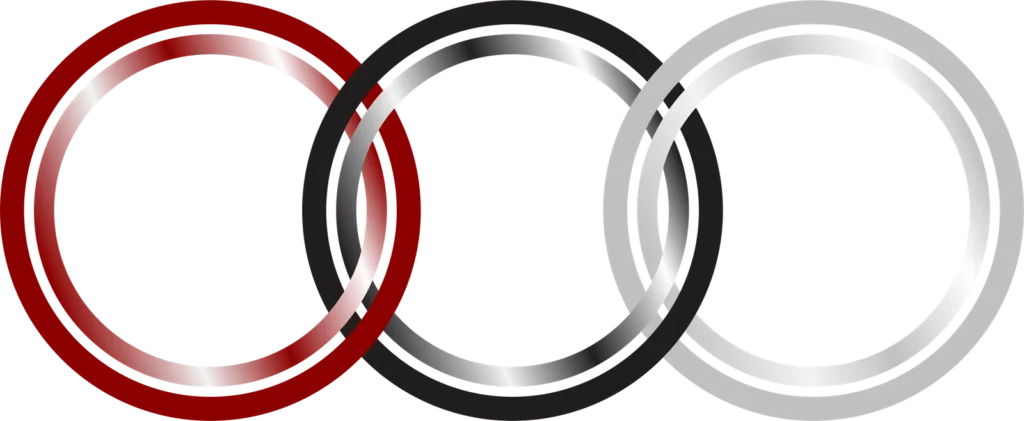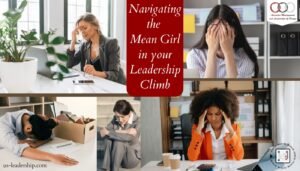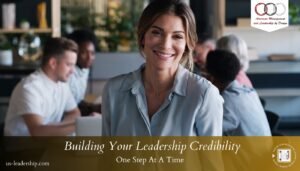Date: March 1, 2024
If you have ever had to take a deep breath before speaking with an employee from a younger generation or older generation due to strained communication, this segment is for you. Welcome to the latest edition of the American Management and Leadership by Design newsletter! Depending on who you ask, it may be easier to win the Power Ball than navigate intergenerational communication in leadership. As the workplace becomes a melting pot of diverse age groups, understanding how to effectively communicate, engage, and develop younger employees is paramount for successful leadership. Let’s explore the challenges, nuances, and strategies for fostering a harmonious environment where leadership bridges the generation gap.
Understanding the Generational Dynamics
1. The Clash of Perspectives
Communication breakdowns often arise from different generational perspectives; not to mention that most people believe that their way of doing things and perception is right. If you have said the following statement, you may need to be mindful that you keep open to various communication styles…. ‘back in my day, we used to’….. Older leaders may view constant communication as intrusive, while younger employees may perceive it as a sign of interest and mentorship.
Rule 101 about leadership: it’s not about what you need. It’s about what your people need and they need you to support them, whether it makes you feel uncomfortable or not. That’s what you signed up for when you decided to be a good leader.
2. Balancing Independence and Guidance
Older generations appreciate independence, having grown up in environments where self-reliance was valued. I still feel a little guilty about my kids not having to walk to school. (Uphill, both ways, in the snow). Younger generations, on the other hand, seek more engagement and support, desiring mentorship and guidance.
In all honesty, I believe that the older generation would have welcomed that type of communication and mentorship. It was just not culturally and socially acceptable in many corporate environments. It was sink or swim. Eat or get eaten. Removing that mentality and ideology takes time.
Challenges in Bridging the Gap
1. Stereotyping and Bias
Stereotypes about millennials or Gen Z being entitled or older generations being resistant to change can hinder effective communication. These biases must be addressed for open dialogue to occur. If we encourage open mindset and provide the appropriate coaching to all parties, the experience of developing and nurturing other generations will seem less daunting.
2. Technology Divide
The digital gap between generations can result in misunderstandings. If you know the names MySpace and Napster, you will need to make sure that you keep an open mindset when interacting with the younger generation. Remember, you used to be the younger generation that was misunderstood. Don’t forget what that felt like. Younger generations might prefer instant messaging, while older generations may favor traditional email or face-to-face communication. Be flexible and embrace change.
The Importance of Developing Young Leaders
1. Succession Planning
Did you honesty think that you were going to be in your leadership position forever? Or, if you have a hard time letting go, this section is for you. Developing the next generation of leaders is critical for the long-term success of any organization. A well-thought-out succession plan ensures a smooth transition and continuity in leadership. The succession plan is not for you. You have a fiduciary responsibility to set your company up for success in the long term. Establish a succession plan in which your team know what to do and run the appropriate drills.
2. Innovation and Fresh Perspectives
Younger employees bring fresh ideas, innovative thinking, and a different perspective. Fostering their development can lead to a more agile and creative organization. Let’s not forget, we are still facing a labor shortage. So, to mitigate quiet quitting, make sure that your employees feel seen, valued, and heard. Incorporate wisdom with innovative and fresh perspectives. You will learn something new and so will they. As a result, you will gain a great reputation as being an employer of choice.
According to a survey by Deloitte, organizations with a strong leadership development culture are 84% more effective at developing leaders than those without.
Recommendations for Effective Intergenerational Leadership
1. Embrace Diversity in Communication Styles
Recognize and appreciate the diversity in communication preferences. Encourage a mix of communication methods, from face-to-face meetings to instant messaging platforms. And if you are implementing a new communication format within your organization, create the buddy system. Pair your experienced employees with less experience employees. This will help decrease time with the assimilation process. Which leads us to mentorship program.
2. Mentorship Programs
Establish mentorship programs that pair experienced leaders with younger talents. This creates a structured environment for knowledge transfer and relationship-building. If you found that there was something lacking for you when you were coming through the ranks, make sure that the next generation has a better experience. “Do the best you can until you know better. Then when you know better, do better.” – Maya Angelou.
3. Foster Inclusive Decision-Making
Include younger employees in decision-making processes. This not only empowers them but also brings a variety of perspectives to the table. Make sure that when you do this, you establish ground rules, expectations, and rules of engagement. Throwing someone is a new situation without any guidance or support will cause more resentment than appreciation.
4. Continuous Learning Initiatives
Invest in continuous learning opportunities for both older and younger employees. This helps bridge the knowledge gap and keeps everyone updated on the latest trends and technologies.
5. Open Dialogue Channels
Create open channels for communication where employees of all ages feel comfortable sharing their thoughts, concerns, and ideas. This could be through regular feedback sessions, suggestion boxes, or digital platforms. This is extremely important when creating your organizational environment. What you say is as equally important as to how you say it.
6. Leadership Development Programs
Implement leadership development programs that focus on cultivating the skills needed for effective leadership in a multigenerational workplace. More specifically, find out the needs of your employees first and then have your leadership development programs created with purpose and intentionality.
7. Recognize and Celebrate Differences
Encourage a culture of appreciation for differences. Recognize that diverse perspectives contribute to the overall success of the organization. Your actions will speak volumes over your words so make sure that you are mindful of what you say and what you do.
Research by Harvard Business Review indicates that companies with a higher proportion of young leaders are more likely to outperform their competitors.
The Future is Here: Let’s Shape it Together
In a world where communication is key, understanding how to communicate across generations is a vital leadership skill. The future of your organization lies in your ability to foster an environment where different generations learn from each other and collaborate harmoniously. Sometimes, the hardest thing to do is listen. Let’s open the lines of communication and create a dialogue that provides more answers than confusion. The future is here, and together, we can shape it into something the next generation can use to make it better.
Contact us today to embark on a leadership journey that transcends generations:
🌐 www.us-leadership.com 📧 [email protected] 📞 1-888-824-4631
🔽🔽🔽 American Management and Leadership by Design – We Fix Businesses and Strengthen Leadership. 💼 💪🏽







